US Dollar Exchange Rates of 27thJune 2013
China Yuan 6.1910
Report from China
Slowing growth alarms exporters to China
Disappointing data on factory output provided another sign that an
economic slowdown in China is well underway. In addition adding to the
concern of analysts are growing signs of a credit squeeze in the
country.
For many years money has been pouring into infrastructure projects which
have helped sustain growth. However, this impressive growth has been
fuelled by debt taken by provincial governments who are now struggling
to find the funds service these loans.
Countries which have a close trading relationship with China are
tracking events carefully as a continuing decline in growth in China¡¯s
economy could undermine the recent recovery by exporters.
Importers to feel impact of weaker yuan
After appreciating against the US dollar for most of this year the
yuan has started to weaken as foreign funds flow out, largely because of
evidence that the Chinese economy is slowing.
However, the yuan is still almost 1.5% higher against the dollar for the
year to-date even though there has been a major movement of cash out
other Asian countries.
However, the recent decline in the yuan/dollar rate is read as signaling
there are real concerns about the pace of slowdown in the Chinese
economy.
Until the middle of last year it seemed certain that the yuan, widely
considered as under valued, would continue to appreciate but markets
have been surprised by the trends in growth and by the decision by the
Chinese Central Bank to intervene.
China achieves solid 2012 real estate sales
Chinese residential real estate sales in 2012 grew 14.9 percent
according to the National Bureau of Statistics of China. Continued
growth in demand for homes is good news for the domestic wood product
manufacturing sector and for exporters supplying timber to the Chinese
market.
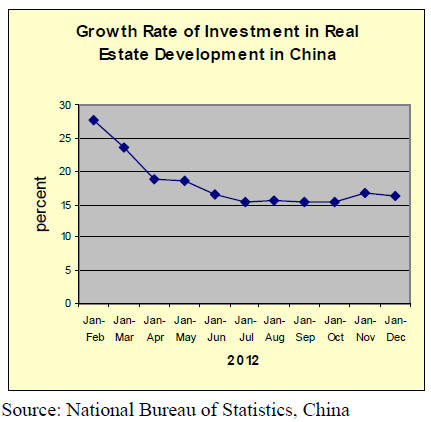
Sales of commercial buildings in China, a major driver of demand for
joinery products and office furniture, increased in 2012. The total
floor area of office building sold in 2012 increased 12.4 percent.
Preoccupation with the strength of Chinese wood products in the
international markets distracts attention from the rapidly developing
domestic market for wooden building materials and added value wood
products.
The expansion of domestic demand in China serves to balance declines in
exports such that demand for timber raw materials will continue to grow.
Price trends for new homes
Data from National Bureau of Statistics show that ,compared to
levels in March 2013, prices for newly constructed residential buildings
declined in 3 cities, remained flat in 2 cities but rose in the
remaining other 65 cities included in the survey. For the complete data
see:
http://www.stats.gov.cn/english/pressrelease/t20130618_402904575.htm
Compared to levels in March this year, prices for existing homes in
April fell in only 3 of the major cities included in the recent survey.
For the most part, house prices increased across the country.
Compared to levels in April last year prices in April 2013 fell in only
3 cities. For 67 cities the year-on-year price increase was in the order
of 13 percent.
Rising prices add to fears of unmanageable inflation in the housing
sector which puts policymakers in a quandary as they try to curb growth
house prices while, at the same time, trying to achieve an economic
recovery.
Strong domestic demand for ¡®redwood¡¯ furniture drives up imports
In recent years the manufacturing of ¡®redwood¡¯ furniture by Chinese
companies has increased and ¡®¡®redwood¡¯¡¯ imports have grown rapidly.
The term ¡®redwood¡¯ includes 5 genera, 8 classes and 33 species. The main
imports are of padauk, mahogany, rosewood, sanders, wenge and ebony.
China Customs data show that in 2012, ¡®redwood¡¯ log imports were 760,000
cubic metres, up by 25% from 2011. The value of imports of ¡®redwood¡¯ in
2012 was US$787 million, an increase of 9% year on year.
The average price for imported ¡®redwood¡¯ logs in 2012 was US$1,039 per
cubic metre. The main sources of ¡®redwood¡¯ imports to China can be seen
in the table below.
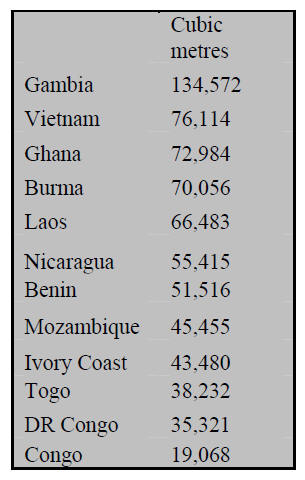
Imports of ¡®redwood¡¯ sawnwood have also increased and in 2012 China
imported 74.538 thousand cubic metres of sawnwood ¡®redwood¡¯.
The sources of ¡®redwood¡¯ sawnwood imports in 2012 are shown in the table
below.
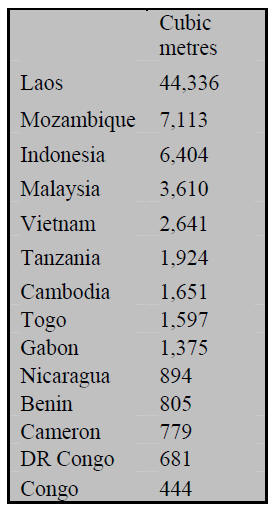
The main sources of ¡®redwood¡¯ are Africa, Southeast Asia and Latin
America. Countries in Southeast Asia remain the traditional suppliers of
¡®redwood¡¯ to China but in recent years some African and Latin American
countries have become regular suppliers.
In the first quarter of 2013, China imported 250,000 cubic metres of
¡®redwood¡¯ logs at a value of US$239.20 million in value. The average
landed price was US$956 per cubic metre, up by around 25% year on year.
Imports of ¡®redwood¡¯ sawnwood in the first quarter of 2013 were 16,800
cubic metres, down by 29% year on year and the average landed price was
US$1,556 per cubic metre.
New-for-old furniture policy extended
The Beijing Municipal Commission of Commerce recently re-issued
regulations for the New-for Old furniture policy detailing the products
included and the scope of subsidy.
Items included in the policy are cabinets, sofas, beds, tables and
chairs which must be free standing. There are no restrictions on size or
material but the policy states the exchange must be only one old item
for one new item of the same type.
The subsidy is a maximum of 10% of the actual price of the new furniture
with 5% of this amount provided by government and 5% provided by the
furniture seller. The amount of the subsidy for a single piece of
furniture must not exceed 1000 Yuan.
The number of companies involved in the programme has increased this
year from 5 to 10 and the number of companies involved in recycling of
old furniture has increased to 7. The new programme will begin in July
and last for 6 months.
New technology institute to promote S. American species
A new institute called the South American Timber Application
Technology Institute has been created to provide Chinese manufacturers
with technological information on South American timbers.
The new institute, located in Beijing, is supported by the China Timber
and Wood Product Distribution Association (CTWPDA), the Timber Saving
and Development Center, the China Forestry Group and the Timber and Wood
Products Quality Supervising and Testing Center of China Logistics and
Procurement Association.
The institute will establish a data bank of South American timbers,
compile data on wood properties and be ready to provide advice on
appropriate processing techniques and enduses. The four agencies
involved will establish a consultative group of experienced local
specialists who can provide technical advice to industry.
The institute aims to provide support for promotion of South American
timber in China and to expand the range of species traded to China.
First quarter imports reverse downtrend of 2012
2012 imports of logs and sawnwood fell short of the levels in 2011
but first quarter 2013 data shows that this down trend has been
reversed. Imports of tropical logs and tropical sawnwood expanded in the
first quarter as can be seen in the following table.
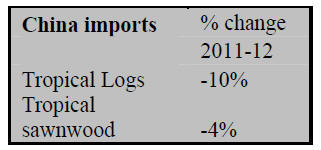

Yuan 10 billion root carving business attracts official support
The business of wood and root carving has, until recently, not
attracted the attention of the public or government agencies but this is
a huge business in China.
The number of companies in China known to be involved in wood and root
carving exceeds 10,000 and these companies employ thousands of workers
as production is labour intensive. It has been estimated that the output
of this industry is around Yuan 10 billion annually.
In May this year a Wood and Root Carving Special Commission was launched
by the China Timber and Wood Product Distribution Association to try
raising the awareness of the public and policy makers of the growing
contribution the industry is to the economy.
¡¡
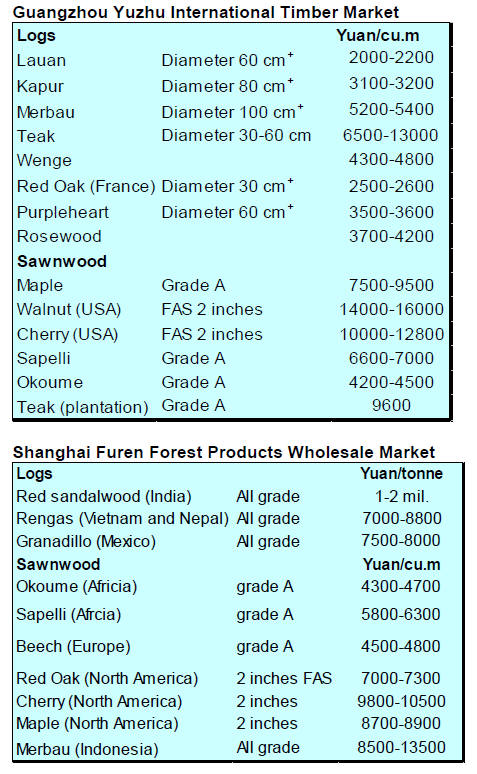

|